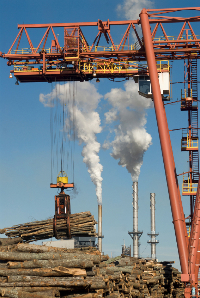
After a steady rise and fall this past year, paper prices have leveled off. According to forest industry research group RISI, the average price range of a 60-lb. coated grade #3 paper at press time was $45.25 to $46.50 per hundredweight (cwt).
What’s the outlook for 2010? Experts predict a gradual, upward movement in paper pricing for the coming year.
For one thing, says Dave Goldschmidt, vice president of marketing, catalog division for paper brokerage Strategic Paper Group, paper manufacturers are desperate to raise their prices because mill input costs for pulp and energy are on the rise.
Also, inventory levels are down at printers and paper merchants, Goldschmidt says. Several paper mills have reduced supply by taking capacity offline permanently, and some continue to take temporary machine curtailments as well.
Manufacturers NewPage and Verso Paper have also shifted some of their equipment from the production of coated papers to other noncoated grades, he says.
What’s more, the U.S. dollar, though relatively stable, remains weak, Goldschmidt says. That means less paper will be imported from Canada and Europe.
Indeed, European imports are at low levels due to the weak dollar, says Dan Walsh, vice president of catalog/publication papers at distributor Bradner Smith & Co. European paper manufacturers are now a “nonfactor in the North American market,” he says.
Asian imports will probably slow down as well, Walsh says, “while the U.S. International Trade Commission investigates whether coated sheet paper from China and Indonesia have been subsidized by their governments.”
Black liquor hangover
Yet another factor is the end of the “Black Liquor” tax credit. Paper mills this year were able to get in on an alternative fuels provision tax credit, thanks to an interpretation of the tax code by the Internal Revenue Service in September 2008.
Although the bill was intended to promote alternative fuels for cars, paper manufacturers got in on the credits because they can use a pulp byproduct to run their mills. (“Black liquor” refers to the thick, dark liquid created when wood is transformed into pulp to make paper.)
Because the payouts from the tax credit were more than expected, the IRS will exclude the paper industry from the alternative fuels provision for fiscal 2010.
Many believe that mills benefiting from the tax credit were passing the savings on to the end user due to the competitive environment, Goldschmidt says, and those funds will now have to be recouped.
Getting demanding
Any paper price increases must backed by demand to stick, and it’s hard to say where demand is headed. “We expect to see some bounce back in the economy,” Goldschmidt says, but it’s unclear if this will drive a significant and sustained increase in paper demand.
For certain, the mills will attempt a price increase at some point, Walsh says — even if demand hasn’t come back in full. “The mills might just try to float an increase in January, although first quarter increases are not usually sustained due to traditionally slow conditions,” he adds.
Walsh expects to see the mills try for an April 1 price increase, or perhaps even a March 1 attempt. “We’ll have to see where demand is by then, but I would not be surprised at all to see a $3/cwt increase sticking,” he says.
Mills busier — for now
Many paper mills are hopping right now, and are busier than they have been in months, says Dan Walsh, vice president of catalog/publication papers at distributor Bradner Smith & Co. That’s due largely to three factors, the first of which is an uptick in demand: RISI reports that demand for coated papers is up 8%.
Then you have paper inventories that have been worked down significantly during the past few months. Order activity is taking place due to the lack of on-hand inventory, Walsh says. Finally, regular seasonal demand has given the mills a boost — although they’re not nearly as busy as in previous years.
Walsh believes the increased paper mill activity is most likely temporary while everyone waits for the economy to bounce back, “and not just Wall Street,” he says. “We need the economy to rebound on Main Street for real demand to kick in.”—JT